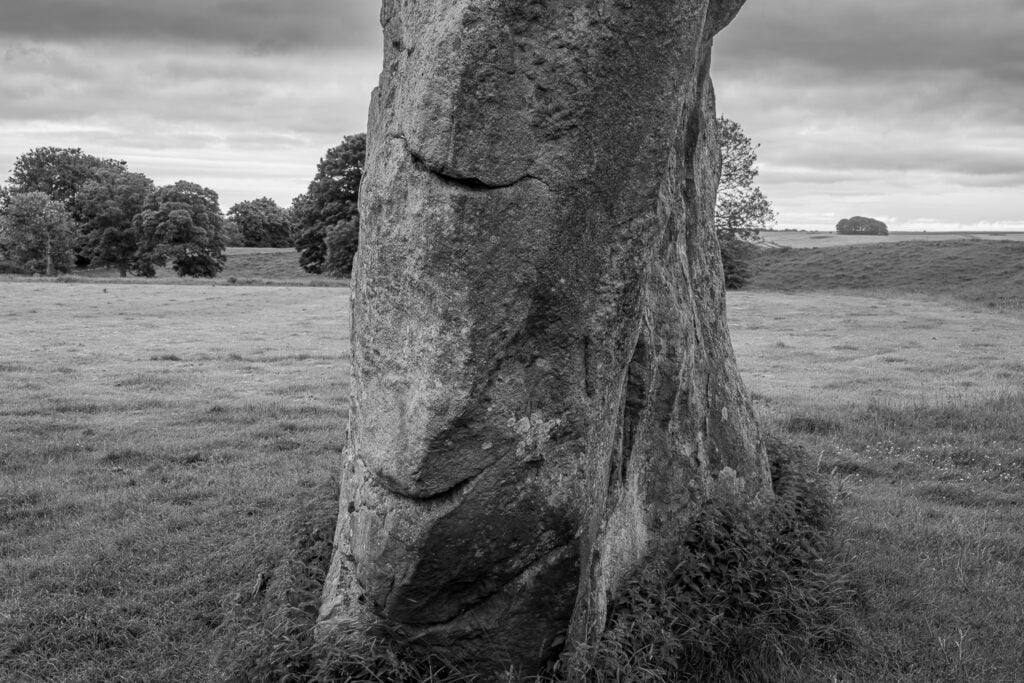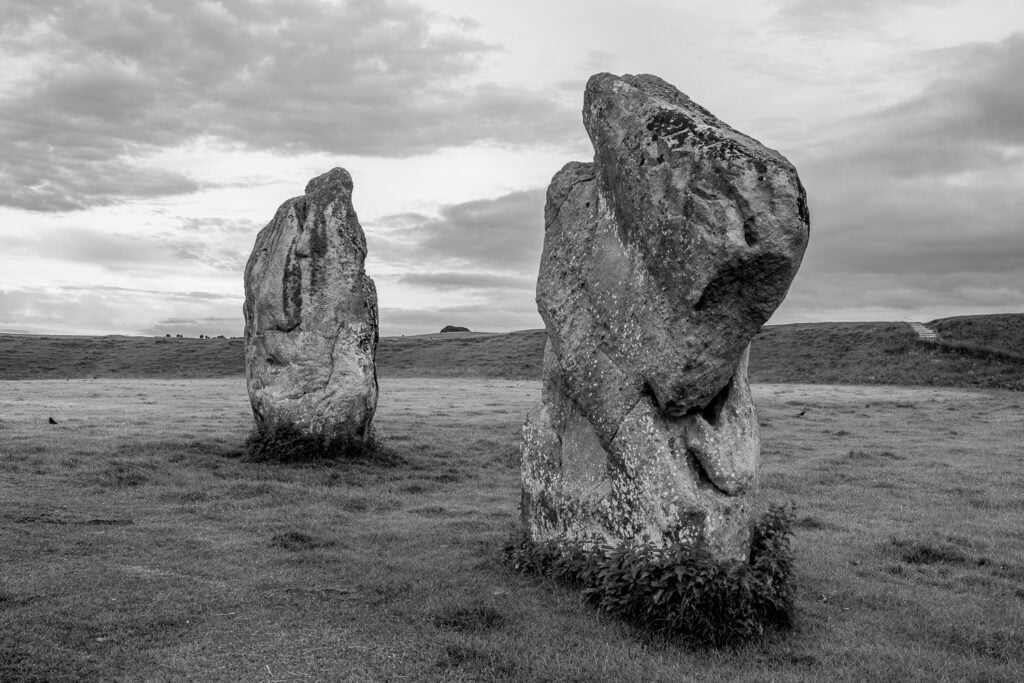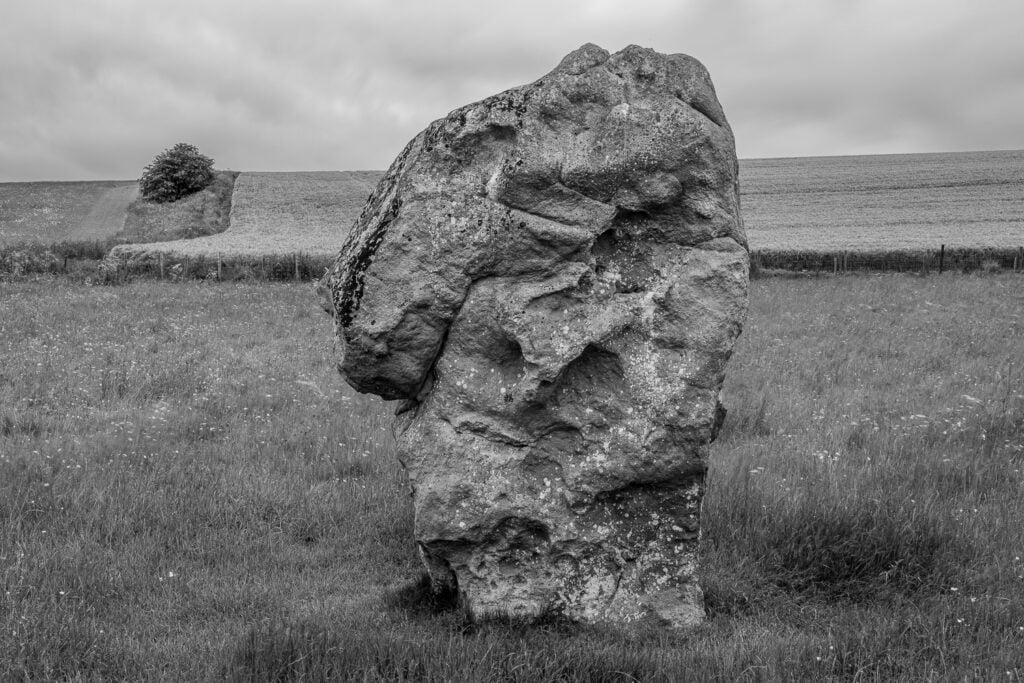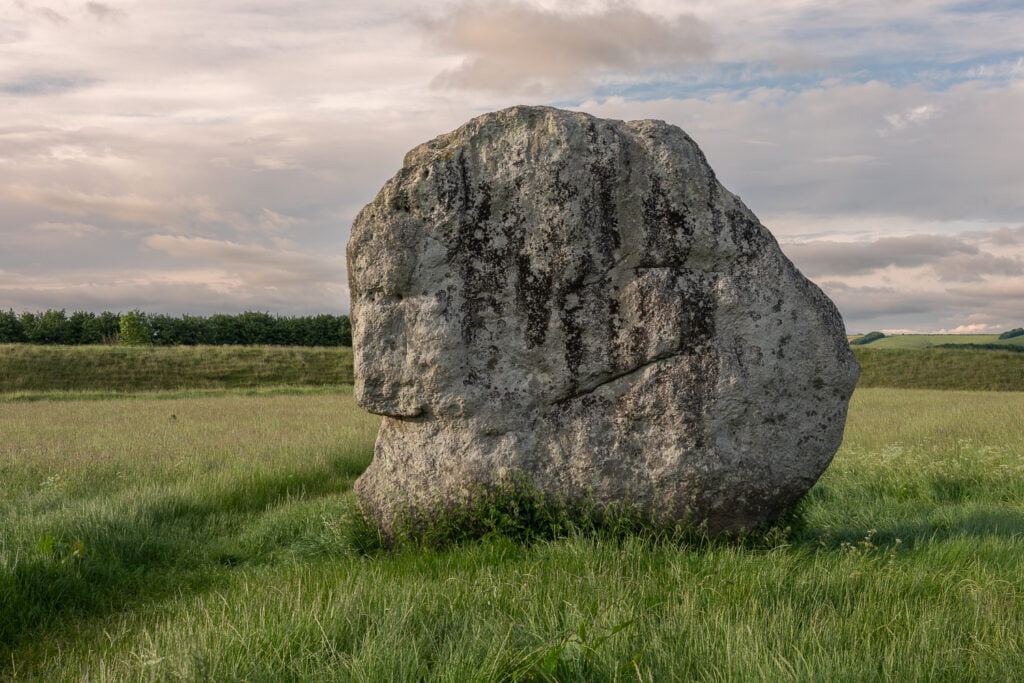I sent some recent photographs of Avebury stone circle to a friend, commenting that some of the stones resembled the shape of people’s expressions or the outline of animals. I saw a shark, a rabbit, a smiling face, a hunched figure, all legitimate interpretations of random shapes of and markings on the collection of immense stones. Her good natured laughing reply was to refer me to pareidolia.
Pareidolia is the tendency to perceive a specific, often meaningful image in a random or ambiguous visual pattern. It has been described as the science behind seeing faces in everyday objects, for example clouds, and often leads people to assign human characteristics to objects. The more I think about this, the more I realise I do this a lot, and the process of imagining and interpretion of random stimuli to arrive at a hypothosis or understanding, has informed much of both my personal and professional life.
Assessing stimuli we encounter is surely essential in navigating through choices we have in our lives. Sometimes that assessment is correct, other times it is incorrect and errors are made. It is unclear to me how intellectual this process is, or whether it it is instinctive, or on a varying spectrum between the two absolutes, depending on changing circumstances.
Whilst thinking about this further, I wondered whether semiotics, the study of cultural signs and symbols which informs our understanding of our world, offers similar defining processes. Both seem to take random events and seek to evolve a language or model of comprehension based on sensory interpretation and our own innate and internalised landscapes and cultural affinities. Both processes, superficially at least, appear to strive to create a model or caricature to explain those stimuli.
Walking around Avebury stones at sunset and dawn, when the light is both diminishing and awakening respectively, is perhaps not the best time to objectively assess these landmarks. They are situated in a primordial landscape, infused with legend and tradition, and the changing light of dawn and sunset plays tricks with our senses, shadows shortening and growing, re-inventing the sculptured shapes into a myriad of designs and textures. It is an environment where, at either the end or the beginning of day, imagination is entirely encouraged to enjoy the experience to its maximum effect.
I recently visited a sculpture exhibition by Henry Moore at a Bruton Gallery. His sculptures have evolved from many influences, but a strong early influence on his interpretation of space and form was the large stones at Stonehenge, just 20 miles from Avebury. An American large format photographer, Paul Caponigro, arrived in the UK with a desire to document the dolmens and stone circles here and in 1967 Avebury was a primary source of images for him.

Rock and Tree, Avebury Stone Circle, England 1967 Paul Caponigro
Paul was one of a number of American photographers who tried to distil unorthodox spirituality from pattern and shapes in landscapes, using monochrome and tonality in a meditative manner to infer both simplicity and grandeur. In this way, apart from their legacy as pure monuments, the stones have also contributed to the development and journeys of great artists and those artist’s own huge cultural legacies. Has pareidolia contributed to those developments, suggesting not just faces or animal shapes, but something more profound in the shifting shadows, form and weight? Perhaps it is then that the pareidolia and semiotic processes successfully co-alesce.
Below are a series of images of Avebury stones which might be construed as having characteristics of animals and other forms. I still enjoy these interpretations, but do not let them occlude my enjoyment of and my hopefully relating to the greater mystery, power and majesty of the original stones.
A gallery of colour images of Avebury stones can be found here, and believing that monochrome images provide a different experience and interpretation, a gallery of black and white images can be found here ( Galleries to be updated soon ).






